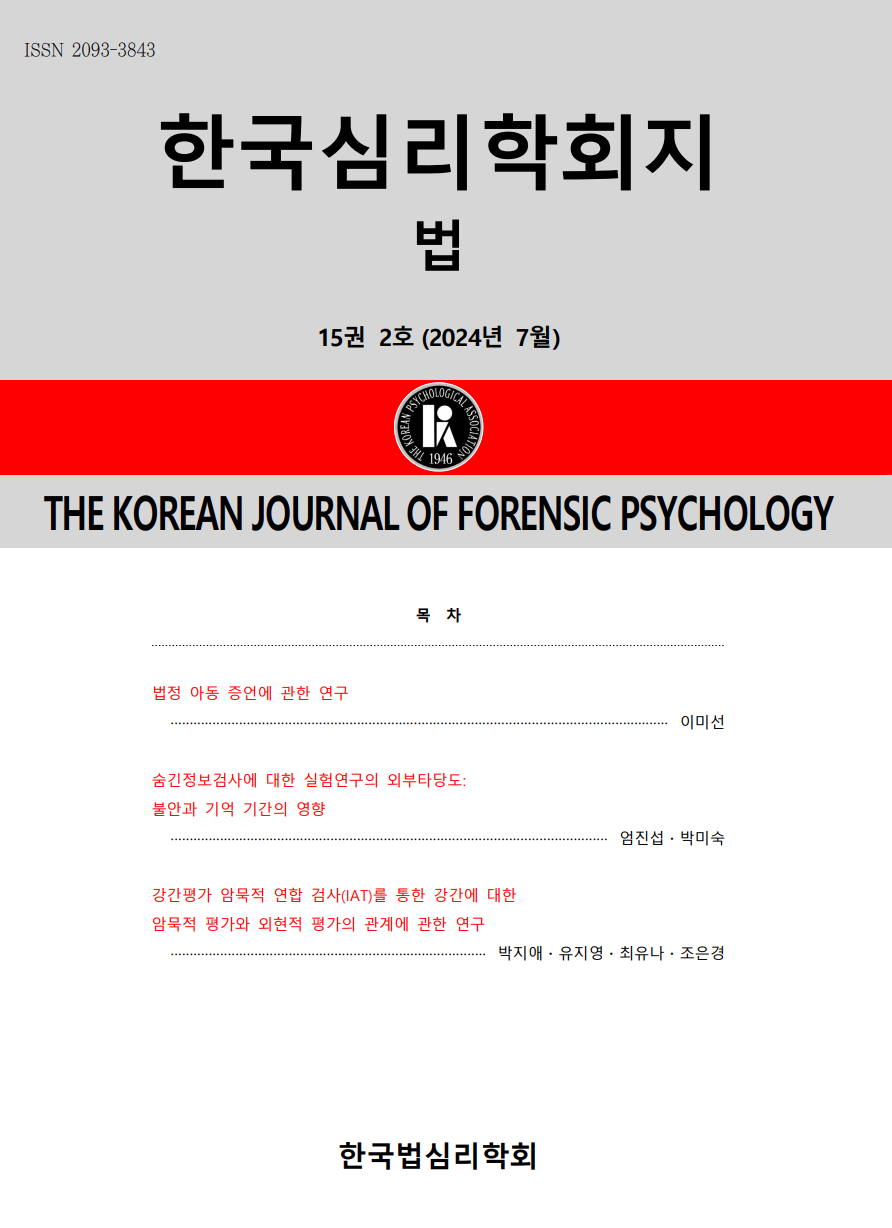open access
메뉴
open access
메뉴 ISSN : 2093-3843
ISSN : 2093-3843
Under section 10 of Korean Criminal Act, it exempts or mitigates punishment for mentally disordered offenders. On the other hand, the public fears that mentally disordered offenders are extremely dangerous and views legal insanity as a legal loophole through which many guilty people ‘escape’ criminal punishment. The purpose of this paper is to examine how frequently the insanity defense is used and how successful it is. We collected 1597 lower court cases which questioned defendant’s mental health. Insanity defense succeeds in only about 305 cases of these cases. The analysis of these cases indicates that successful insanity defense in Korea is extremely rare, less than one tenth of US cases. Mentally disordered defendants suffer schizophrenia, mood disorder, and intellectual disability, and they committed personal crimes such as murder, assault, or sexual assault rather than property crimes. In addition, characteristics of mentally disordered offenders are similar to those from previous studies. The legal and psychological implications of these results and future directions for research are discussed.
김경화 (2014). 정신장애 범죄자의 교정처우, 교정복지연구, 35, 33-70.
김용식, 이정균 (2000), 정신의학, 일조각.
노용우 (2001), 책임능력판단에 있어서 심신장애의 의미. 형사법연구, 15, 55-72.
대법원 (2017), 사법연감, 법원행정처.
박미숙 (2011), 심신장애 판단과 감정. 형사판례연구, 19, 107-137.
박상식 (2007), 정신장애범죄자의 형사책임능력판단 기준에 관한 연구, 형사정책연구, 69, 103-144.
보건복지부 (2017), 2016년도 정신질환실태 역학조사, 보건복지부.
조병구 (2010), 피고인의 책임능력에 대한 판단(정신장애 범죄자의 책임능력 중심으로), 법관의의사결정 이론과 실무(800-919페이지). 사법발전재단.
최윤정, 조지희, 권정화 (1998), 형사적 정신감정결과와 법원판결에 관한 고찰, 신경정신의학, 37(5), 903-912.
최이문, 강태경, & 조은경 (2014). 미국 법원에서 심리학 도구(사이코패시 체크리스트, PCL-R)의 역할에 대한 연구(2005~2012), 형사정책연구, 100, 375-414.
한정환 (2001), 심신장애와 책임능력, 형사법연구, 15, 73-94.
American Psychiatric Association. (2013). Diagnostic and statistical manual of mental disorders (5th ed.). Arlington, VA: American Psychiatric Publishing.
Bartol, A. M., & Bartol, C. R. (2014). Criminal behavior: A psychological approach. Boston:Pearson.
Box, S., Hale, C., & Andrews, G. (1988). Explaining fear of crime. The British Journal of Criminology, 28(3), 340-356.
Fazel, S., Grann, M., Carlström, E., Lichtenstein, P., & Långström, N. (2009). Risk factors for violent crime in Schizophrenia: a national cohort study of 13,806 patients. The Journal of clinical psychiatry, 70(3), 362-369.
Greene, E., & Heilbrun, K. (2013). Wrightsman's psychology and the legal system(6th eds.). Cengage Learning.
Melton, G., Petrila, J., Poythress, N., & Slobogin, C.(2007). Psychological evaluations for the courts:A handbook for mental health professionals and lawyers (3rd ed.). New York: Guilford.
Monahan, J., Walker, W. L. (2014). Social science in law(8th ed.). Foundation Press
Weiner, I. B, & Otto, R. K. (2013). The handbook of forensic psychology(4th ed.). New Jersey; Wiley & Sons.